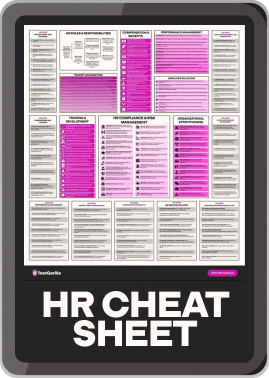8 tricky Erlang developer interview questions to ask when hiring
Hiring an experienced Erlang developer isn’t easy. Many candidates list Erlang on their resumes – but not all can build fault-tolerant systems, navigate supervision trees, or debug message-passing issues in a live environment. And in industries like telecoms, fintech, or infrastructure, one bad hire can compromise uptime, reliability, and long-term maintainability.
That’s why your interview questions must go deeper than basic syntax by testing a candidate’s real-world understanding of Erlang’s concurrency model, OTP principles, and distributed system behavior.
In this article, we explore tricky Erlang developer interview questions that go beyond theory – and show you what strong answers look like. Plus, we explain how to supplement interviews with Erlang coding tests.
Why Erlang developer interviews are uniquely challenging
Knowing when you’ve found top-notch candidates who understand this functional programming language is tough. Here are three reasons why:
1. Actor model ≠ thread model
Many developers are used to working with other programming languages that rely on threads and shared memory. Erlang is different. It uses the Actor Model – where lightweight processes run in isolation and communicate through asynchronous message passing. This design avoids common issues like race conditions – but only if developers understand how to build around it.
2. Few understand BEAM, supervision trees, and hot swapping
Erlang runs on a virtual machine called BEAM, which handles things most languages can’t – like restarting failed processes (using supervision trees) and updating code in live systems (hot code swapping). These features are powerful but complex. Without hands-on experience, most candidates won’t know how to use them reliably in production.
3. Syntax ≠ systems thinking
Just because someone can write Erlang doesn’t mean they can design resilient systems. So when evaluating Erlang candidates, you must ensure they’re aware of fault tolerance, isolation, and recovery – not just syntax. That shift in mindset is crucial for building robust applications and scalable systems.
What to look for in a strong Erlang developer
Here are the skills to look for when reviewing Erlang candidates or planning your interviews:
1. Concurrency and message passing
Erlang uses lightweight processes that communicate by passing messages. Look for candidates who can explain how this model works – and how they’ve used it to build scalable, high-throughput systems.
2. Open Telecom Platform (OTP) and supervision trees
OTP is the backbone of production-grade Erlang systems. The best candidates understand supervision strategies, know when to use behaviors like gen_server, and can explain how to recover from failures automatically.
3. Pattern matching and immutability
More than just language features, these are the keys to writing readable, reliable code. Strong developers use them to simplify logic, direct execution to the correct function clause, and avoid subtle bugs.
4. Debugging tools and hot code upgrades
Erlang offers powerful tools like observer, process_info, and release_handler. Candidates with production experience know how to trace issues and deploy changes without taking the system offline.
Pro tip: Depending on your setup, stack familiarity – including experience with Mnesia (Erlang’s database), RabbitMQ, or Cowboy (a small, fast HTTP server) – may also be essential.
The best insights on HR and recruitment, delivered to your inbox.
Biweekly updates. No spam. Unsubscribe any time.
8 tricky Erlang developer interview questions
Below, you’ll find:
A selection of tricky Erlang developer questions
Why each is tricky
What a strong answer looks like
A mix of expert tips and information about red and green flags to look for in candidates’ answers
1. How do Erlang processes communicate, and what advantages does this model offer?
Why it’s tricky: Many candidates can explain message passing at a high level – but will stumble when asked to connect it to system reliability or scalability.
What a strong answer looks like:
In Erlang, processes are isolated and don’t share memory. They communicate by sending asynchronous messages using the ! operator. Each process has its own mailbox and handles messages using a receive block.
This keeps processes decoupled and makes it easier to reason about concurrency. It also prevents race conditions – which is a major win when building scalable systems.
Expert tip: Follow up by asking candidates to describe a time they used this model to design a fault-tolerant feature or solve a performance bottleneck.
2. What’s the difference between spawn, spawn_link, and spawn_monitor?
Why it’s tricky: This challenges candidates to demonstrate how well they understand error containment and fault handling between processes – not just process creation.
What a strong answer looks like:
spawn runs a process in the background with no connection to the parent – great if you don’t care about what happens next.
spawn_link ties the child and parent together – if one crashes, so does the other.
spawn_monitor gives you a notification if the monitored process exits – but without risking your own process. I use spawn_monitor when I want visibility into failures without taking down the supervisor.
Green flag: Favor candidates who understand not just the mechanics but also the reasoning behind each one – and when to use them in production.
3. What’s the significance of the “let it crash” philosophy in Erlang?
Why it’s tricky: This reveals how deeply a candidate understands Erlang’s design principles – and whether they trust the supervision model or try to avoid failure altogether.
What a strong answer looks like:
“Let it crash” is a mindset – it means we don’t try to predict every failure. Instead, we isolate processes and let supervisors restart the broken ones. This way, your system stays healthy even if individual components fail.
I’ve used this to simplify error handling – instead of patching bugs in multiple places, I let the failing process crash and restart cleanly with a known good state.
Red flag: Be wary of candidates who talk only about preventing crashes (overengineering defensive code often signals discomfort with Erlang’s resilience model).
4. How does Erlang's process isolation model contribute to building fault-tolerant, scalable systems?
Why it’s tricky: This question challenges candidates to articulate how Erlang's lightweight processes and strict process isolation underpin its ability to reliably handle complex, concurrent applications.
What a strong answer looks like:
Erlang's architecture is built around lightweight processes that are completely isolated – they don't share memory and communicate solely through message passing. This design ensures that a failure in one process doesn't directly affect others, embodying the “let it crash” philosophy.
Because these processes are inexpensive to create and manage, we can design systems with thousands or even millions of concurrent processes, each handling a specific task. Such a model builds fault tolerance and easy horizontal system scaling.
In a messaging platform I worked on recently, we assigned a separate process to each user session, making the system highly resilient and scalable.
Green flag: Seek out candidates who can provide concrete examples of how they've leveraged process isolation to build robust applications – and who understand the implications of this model on system design and fault tolerance.
5. What are some common pitfalls in distributed Erlang systems, and how do you mitigate them?
Why it’s tricky: This pushes candidates to demonstrate battle-tested experience with complex systems – not just textbook theory.
What a strong answer looks like:
Node discovery is a big one – especially when using global process registration. I’ve seen split-brain issues when nodes reconnect after a partition.
To avoid that, I use libraries like gproc or rely on local registration where possible. Also, mismatched cookies between nodes can silently block communication, so I always automate cookie sync across the cluster. Distributed Erlang is powerful, but it needs discipline.
Red flag: Look out for candidates who gloss over network partitions or assume all nodes “just work” together (that’s rarely the case in production).
6. Explain how hot code swapping works in a live system.
Why it’s tricky: Only experienced developers will understand both how to do it and when not to.
What a strong answer looks like:
In Erlang, you can have two versions of a module loaded at the same time. The release_handler module is used to trigger upgrades, and in OTP behaviors like gen_server, you implement the code_change/3 callback to manage the transition. You load the new version, and any processes using the old version can be upgraded in place without downtime.
But the tricky part is the state handoff – converting internal state from one version to the next can be brittle. That’s why I use hot swapping only when it’s necessary and has been thoroughly tested in staging first.
Expert tip: “If a candidate hasn’t done [hot code swapping], they’ll usually stutter,” Listening.com founder Derek Pankaew says. “Good Erlang devs will walk you through using release_handler, loading a second version of a module, and triggering an upgrade without downtime. Great ones will mention why they avoid it unless absolutely necessary – usually because the state handoff between old and new versions is brittle. The point is: it’s a test of operational maturity, not just syntax.”
7. How do you handle state in a gen_server process, and what pitfalls should you avoid?
Why it’s tricky: This question digs into real-world implementation of OTP behaviors and persistent state management – a common area for subtle bugs.
What a strong answer looks like:
State in a gen_server is typically stored in the loop’s state variable, which gets passed between callbacks. I usually use maps or records to make it structured and readable.
One common pitfall is holding onto too much data or mixing side effects into the state logic. I’ve also seen issues where the state isn’t updated correctly between handle_call and handle_info. To avoid this, I always keep state transformations pure and ensure every state change is deliberate.
Red flag: Be cautious of candidates who treat state as a black box or don’t mention the importance of keeping it immutable and predictable.
8. What tools do you rely on during development to catch bugs or performance issues early?
Why it’s tricky: This uncovers whether a candidate knows how to proactively manage code quality in the Erlang development environment – not just react after things break.
What a strong answer looks like:
I use recon and observer for runtime inspection, especially for checking memory usage and process counts.
For development, I rely on EUnit and Common Test to write unit tests and integration tests.
I also use Dialyzer to catch type inconsistencies – it’s saved me from nasty bugs more than once.
For performance, I sometimes use fprof or eprof to trace where bottlenecks are. I keep these tools wired into my workflow – not just for emergencies.
Expert tip: Follow up by asking which tools they reach for first in a performance issue. Candidates who mention just logging or trial-and-error may lack structured debugging habits.
Red flags in Erlang interviews
In addition to the red flags mentioned above, here are some other key red flags to look out for when interviewing Erlang candidates:
Object-oriented paradigm (OOP) fixation: Candidates who talk about classes and inheritance too much could lack familiarity with Erlang's functional, process-oriented design
Difficulty with recursion and tail-call optimization: Those who struggle with these fundamental concepts might misunderstand Erlang's core programming patterns
Neglecting supervision and error handling: Candidates who overlook Erlang's "let it crash" philosophy and supervision strategies might have gaps in their understanding of fault tolerance
Gaps in understanding of message queues, scheduling, or process isolation. Without this knowledge, candidates may design systems that struggle with concurrency and reliability
Overemphasis on shared state: Those who disregard message passing might create brittle, non-idiomatic Erlang code
Combine interviews with hands-on coding tests
While interviews assess theoretical knowledge, real Erlang proficiency shines through in practical application. That’s why you must incorporate coding tests to reveal how your Erlang candidates approach real-world challenges.
To build systems that support continuous operation, you must go beyond theoretical knowledge and test how candidates think in code. Effective Erlang assessments help you evaluate:
GenServer implementation and messaging logic: The ability to design and manage server processes
Process coordination and fault recovery: Strategies for managing concurrent processes and gracefully handling failures
Pattern matching and recursion: Proficiency in essential Erlang constructs
Tools like TestGorilla offer customizable coding tests that simulate realistic BEAM-style problems, providing insights into your talent pool’s practical skills and problem-solving abilities. We recommend that you screen candidates with Erlang tests – then shortlist the strongest for your interview.
Seal the deal with better assessments
Hiring skilled Erlang developers requires insightful interviews and practical coding assessments. By focusing on key competencies like process management, fault tolerance, and functional programming principles in your interview questions and assessments, you can identify top-tier Erlang talent.
TestGorilla offers customizable coding skills tests that mirror real-world Erlang-based challenges. Book a demo to learn more!
You've scrolled this far
Why not try TestGorilla for free, and see what happens when you put skills first.




















